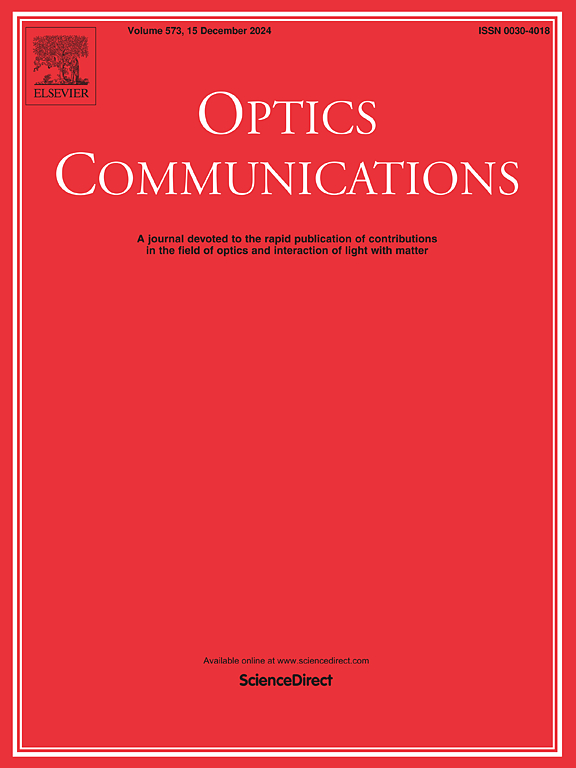Non-line-of-sight scattering channel modeling of MIMO links for underwater wireless optical communication
IF 2.2
3区 物理与天体物理
Q2 OPTICS
引用次数: 0
Abstract
Underwater wireless optical communication (UWOC) holds promising applications for achieving higher data rates and bandwidth in underwater communication. However, significant challenges arise due to high absorption and scattering effects in the underwater environment, coupled with the obstruction of transmission paths by unknown obstacles. Consequently, the development of UWOC technology faces substantial hurdles. In this context, we consider a non-line-of-sight (NLOS) UWOC multiple-input multiple-output (MIMO) configuration to enhance the performance of communication systems. In this paper, we initially utilize Monte Carlo simulations (MCS) to model the NLOS UWOC MIMO channel and then analyze the corresponding path loss and channel impulse response (CIR). An equal gain combining (EGC) method is employed at the receiver to merge the received signals. Subsequently, we use a weighted gamma function polynomial (WGFP) to simulate the CIR of NLOS UWOC MIMO links with an arbitrary number of light sources and detectors. Finally, we use the acquired CIR to calculate the system’s bit error rate (BER) under various configuration conditions. The MCS results indicate that, compared to single-input single-output (SISO) systems, MIMO systems experience a path loss reduction of over 3 dB, and the amplitude of the CIR increases by more than double, the BER performance has also seen significant improvement. Additionally, this validates the effectiveness of the WGFP model under NLOS conditions.
求助全文
约1分钟内获得全文
求助全文
来源期刊

Optics Communications
物理-光学
CiteScore
5.10
自引率
8.30%
发文量
681
审稿时长
38 days
期刊介绍:
Optics Communications invites original and timely contributions containing new results in various fields of optics and photonics. The journal considers theoretical and experimental research in areas ranging from the fundamental properties of light to technological applications. Topics covered include classical and quantum optics, optical physics and light-matter interactions, lasers, imaging, guided-wave optics and optical information processing. Manuscripts should offer clear evidence of novelty and significance. Papers concentrating on mathematical and computational issues, with limited connection to optics, are not suitable for publication in the Journal. Similarly, small technical advances, or papers concerned only with engineering applications or issues of materials science fall outside the journal scope.
 求助内容:
求助内容: 应助结果提醒方式:
应助结果提醒方式:


